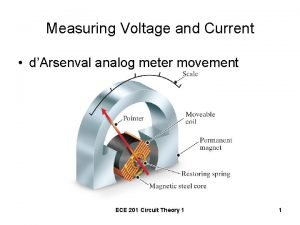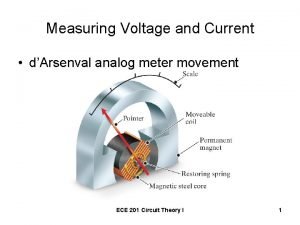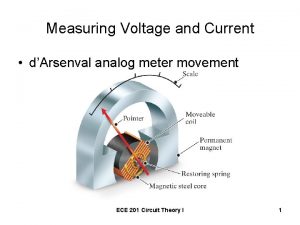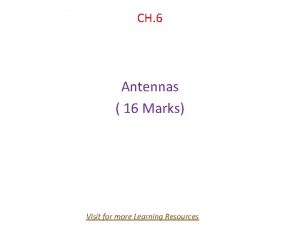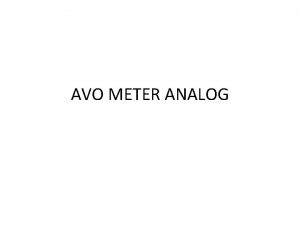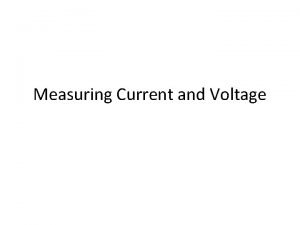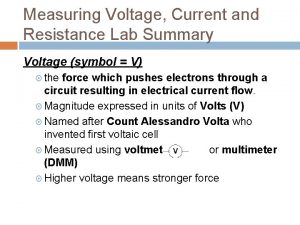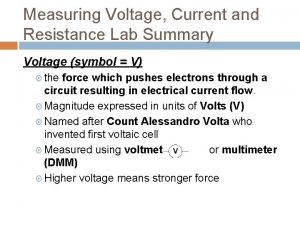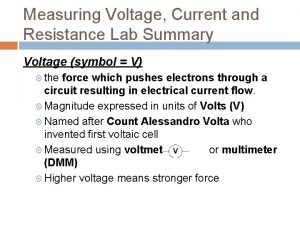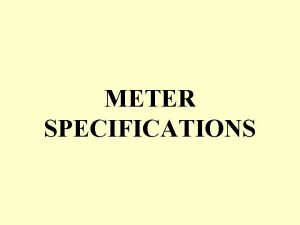Measuring Voltage and Current dArsenval analog meter movement










- Slides: 10

Measuring Voltage and Current • d’Arsenval analog meter movement ECE 201 Circuit Theory 1 1

Analog Ammeter • Use a d’Arsenval meter movement with a parallel resistor (shunt). • The parallel resistor diverts some of the current away from the meter movement. ECE 201 Circuit Theory 1 2

Analog Voltmeter • Use a d’Arsenval meter movement in series with a resistor (multiplier). • The resistor limits the voltage drop across the meter movement. ECE 201 Circuit Theory 1 3

Sources of Error • Any instrument (meter) used to make measurements extracts energy from the circuit. (Known as “loading” the circuit). • The amount of error due to loading depends on the effective resistance of the instrument compared with the resistance in the circuit. ECE 201 Circuit Theory 1 4

Rule of the “one-tenth” • The effective resistance of the ammeter should be no more than 1/10 th of the value of the smallest resistance in the circuit. – The current being measured should be the same with or without the ammeter. ECE 201 Circuit Theory 1 5

For a Voltmeter • Since voltage is a parallel measurement, the “loading” effect is minimized when the voltmeter resistance is much higher than the circuit resistance across which the measurement is being made. ECE 201 Circuit Theory 1 6

Ammeter Example • A 50 m. V, 1 m. A d’Arsonval movement is to be used in an ammeter with a full-scale reading of 1 A. Determine RA. (Movement resistance is equal to (50 m. V/1 m. A) = 50Ω) ECE 201 Circuit Theory 1 7

Solution 999 m. A ECE 201 Circuit Theory 1 1 m. A 8

Ammeter Example continued • How much resistance is added to the circuit when the meter is inserted to measure current? ECE 201 Circuit Theory 1 9

1 A + 50 m. V - 50/999 Ω ECE 201 Circuit Theory 1 50 Ω 10
